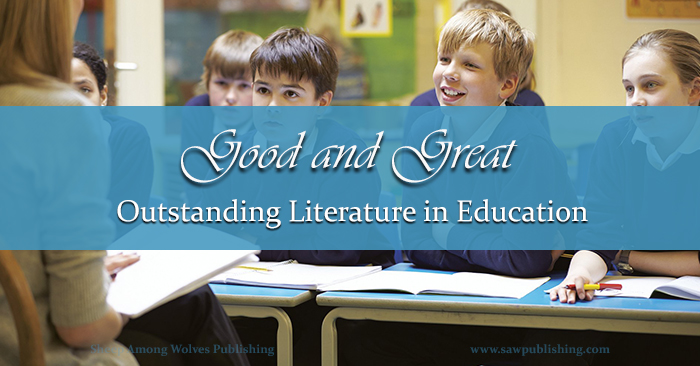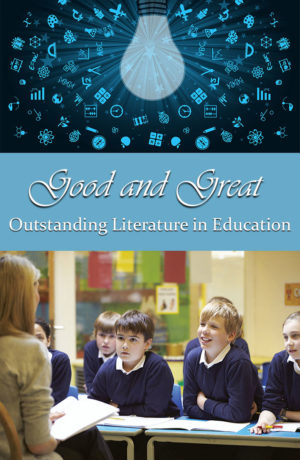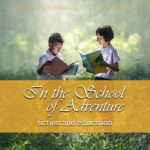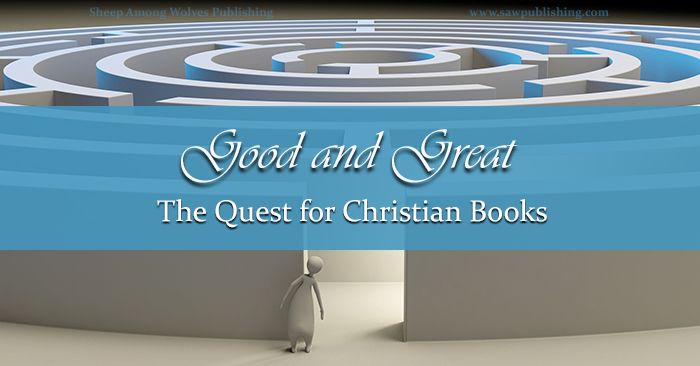Good and Great: Outstanding Literature in Education
 Alright, ladies and gentlemen! It’s time for another peep into Webster’s Dictionary. Today we’re taking a look at the role of good and great—outstanding—literature in education.
Alright, ladies and gentlemen! It’s time for another peep into Webster’s Dictionary. Today we’re taking a look at the role of good and great—outstanding—literature in education.
When I looked up the word “outstanding” in Noah Webster’s iconic 1828 dictionary, I received three definitions. I want to take a look at each of them.
So here’s a summery literature, education, and outstanding-ness—as defined by America’s father of dictionaries, Mr. Webster himself.
Good and Great Education: Resisting effectually
Yes, Noah Webster’s first definition of “outstanding” actually is “resisting effectually”—although he adds a note to qualify that even in his own day this archaic sense was “little used.” We can picture an “outstanding” medieval castle “resisting effectually.” We can picture an “outstanding” 16th century theologian “resisting effectually.”
And can you picture the good and great literature of education “resisting effectually” too?
This is may be one of the most significant roles that outstanding literature plays in education. Good and great literature—with its cumulative heritage of past generations—exerts a huge stabilizing force culturally, emotionally, intellectually, even spiritually on every generation it educates. In a world that is rapidly changing, classic literature is one thing that stays pretty much the same. It grows a little older. It gets weeded a little more rigorously. But at the end of the day good and great literature is outstanding—”resisting effectually” the pressures of time and change.
 Good and Great Education: Projecting Outward
Good and Great Education: Projecting Outward
This is the definition from which our modern figurative use of the word “outstanding” is derived. Outstanding literature “projects” (or to use a more everyday word, “sticks”) out. You can’t miss it. It draws attention to itself by the very fact that it doesn’t conform to the surface around it.
This is another important role of literature in education. Good and great books stick out. They draw attention to themselves, and as they draw that attention their good and great qualities become the defining feature in the landscape.
Good and great literature is the literature students don’t forget. It’s the literature that, as students look back on their education decades later, will be outstanding still—“projecting outward”—sticking out in their memories.
Good and Great Education: Unpaid
Unpaid? Like an outstanding bill?
That’s exactly where the third definition of “outstanding” comes from. “Not collected;” Webster informs us, “unpaid; as outstanding debts.”
And actually, when you come to think of it, what better description can you find for the real impact every teacher hopes literature will have in their students lives? At the end of a formal education what is literature if not an outstanding loan—an investment made by both teacher and student, in the expectation of ongoing interest or dividends to be paid back throughout that student’s life.
Good and great literature in education is outstanding in exactly this senses—a blessing as yet “unpaid” but which will be paid, time and time again, in the years to come.
OUTSTANDING: Literature in Education
Literature is so much more than a box to be ticked on the educational to-do list. As Webster’s definitions help to highlight, the role of outstanding literature in education is both far-reaching and profound.
Outstanding literature plays an integral role as a stabilizing force, as a landmark, as an investment, not only during a student’s education but throughout the whole of their life.
Looking for more thoughts on good and great books? See our previous post:
You might also enjoy:

A vibrant vocabulary should be “pulsating with life, vigor, or activity.” But how on earth do you get there? SAW Publishing’s FREE Word of the Week is a great place to start!

“Literature is a luxury; fiction is a necessity.” What does that mean when we look at fiction from the standpoint of education?

Today I’m delving into the long answer to the question What’s Your WIP? giving a behind-the-scenes preview of a novel still in the making.
- Mozart: The Boy Who Changed the World with His Music—Book Review
- Rocket Science for Babies—Book Review

